
QUALIFIER 24.2 A&B STANDARD
INDIVIDUAL ELITE/RX
24.2 A
At 0’:
AMRAP 6'
20 toes to bar
20 dual dumbbell hang snatch
20 toes to bar
20 dual dumbbell hang clean and jerk
20 toes to bar
20 dual dumbbell box step over
22,5 / 15 kg
24.2 B
At 10’:
3 rounds of:
AMRAP 2'
30 Wall Ball Shots 9/6kg
Máx. Burpee Bar Muscle Up
rest 1'
INDIVIDUAL TEENS 13-5
24.2 A
At 0’:
AMRAP 6'
10 toes-to-bar
20 alt. dumbbell hang snatch
10 toes-to-bar
20 alt. dumbbell hang clean and jerk
10 toes-to-bar
20 1-dumbbell box step over
15 / 10 kg, 50 cm
24.2 B
At 10’:
3 rounds of:
AMRAP 2'
20 Wall Ball Shots 6/3kg, 305/274cm
Máx. Burpee Pull-Ups
rest 1'
INDIVIDUAL TEENS 16-18
24.2 A
At 0’:
AMRAP 6'
20 toes-to-bar
20 dual dumbbell hang snatch
20 toes-to-bar
20 dual dumbbell hang clean and jerk
20 toes-to-bar
20 dual dumbbell box step over
15 / 10 kg, 50 cm
24.2 B
At 10’:
3 rounds of:
AMRAP 2'
30 Wall Ball Shots 6/3kg, 305/274cm
Máx. Burpee Pull-Ups
rest 1'
TEAMS ELITE/RX
24.2 A
At 0’:
AMRAP 6'
20 toes to bar
20 dual dumbbell hang snatch
20 toes to bar
20 dual dumbbell hang clean and jerk
20 toes to bar
20 dual dumbbell box step over
22,5 / 15 kg, 60 / 50 cm
24.2 B
At 10’:
3 rounds of:
AMRAP 2'
Athlete A: 30 Wall Ball Shots 9/6kg
Athlete B: 24/20 Cal Row
Athlete C: 90 Double Unders
Max. Burpee Bar Muscle-Ups
rest 1'
TEAMS OPEN/INTERMEDIATE
24.2 A
At 0’:
AMRAP 6'
10 toes to bar
20 dual dumbbell hang snatch
10 toes to bar
20 dual dumbbell hang clean and jerk
10 toes to bar
20 dual dumbbell box step over
15 / 10 kg, 60 / 50 cm
24.2 B
At 10’:
3 rounds of:
AMRAP 2'
Athlete A: 20 Wall Ball Shots 9/6kg
Athlete B: 20/16 Cal Row
Athlete C: 120 Single Unders
Max. Burpee Pull-Ups
rest 1'
NOTES
Before starting the test, mark a line on the floor to delimit the minimum distance from the rack to the dumbbells and the box (150 cm). Also mark a line delimiting the minimum starting distance in 24.2B, located at least 150 cm from the wall balls station. If the team test is carried out, the two athletes performing rope or rowing must be located at least 150 cm from the rack. You can use the same mark used for section A, or mark a different one if you use a different rack for this part.
The test begins in part A, with the athlete located behind the separation line with the rack. After the “3, 2, 1… go”, the athlete will go to the rack and begin the workout. The result of part A will be the repetitions accumulated in the 6 minutes.
After finishing this first part, there will be a rest until minute 10. At minute 10, the first round of section B begins. It will begin behind the delimited line, and at “3, 2, 1… go” the athlete will go for the wall ball to perform the indicated repetitions. In the case of teams, the athletes who perform the variations will be previously positioned with the rope in their hand or sitting on the rower without touching the handlebars, to begin at minute 10. After 2 minutes of work, they rest 1 minute and the dynamic will be repeated until the 3 rounds are completed. The result of section B will be the total accumulated repetitions. Only repetitions completed within the 2-minute windows of work will be valid.
In teams, both in section A and section B, the result will be the sum of repetitions of the three members in each section.
TEAMS
In the case of teams, each athlete must perform the test individually and choose a different variation of part B (wall balls, double unders or rowing calories). The two athletes performing jump rope or rowing must be located at least 150 cm from the rack. You can use the same mark used for section A, or mark a different one if you use a different rack for this part. In both cases, they will be positioned before starting each round with the rope in their hand or sitting on the oar without touching the handlebars.
In both section A and section B, the result will be the sum of repetitions of the three members in each section.
SUBMISSION RULES
- Before carrying out the test, record all the marked measurements and material used so that it can be seen that the marked standards are met. Remember to also teach the measurement of the wall ball target.
- Videos must be uploaded without cuts and without any type of editing.
- Make sure a rising clock is visible throughout the recording.
- Make sure the standards of the movements can be seen in the video.
- Avoid using videos with fisheye or similar lenses, as they may be rejected.
STANDARDS
TOES-TO-BAR
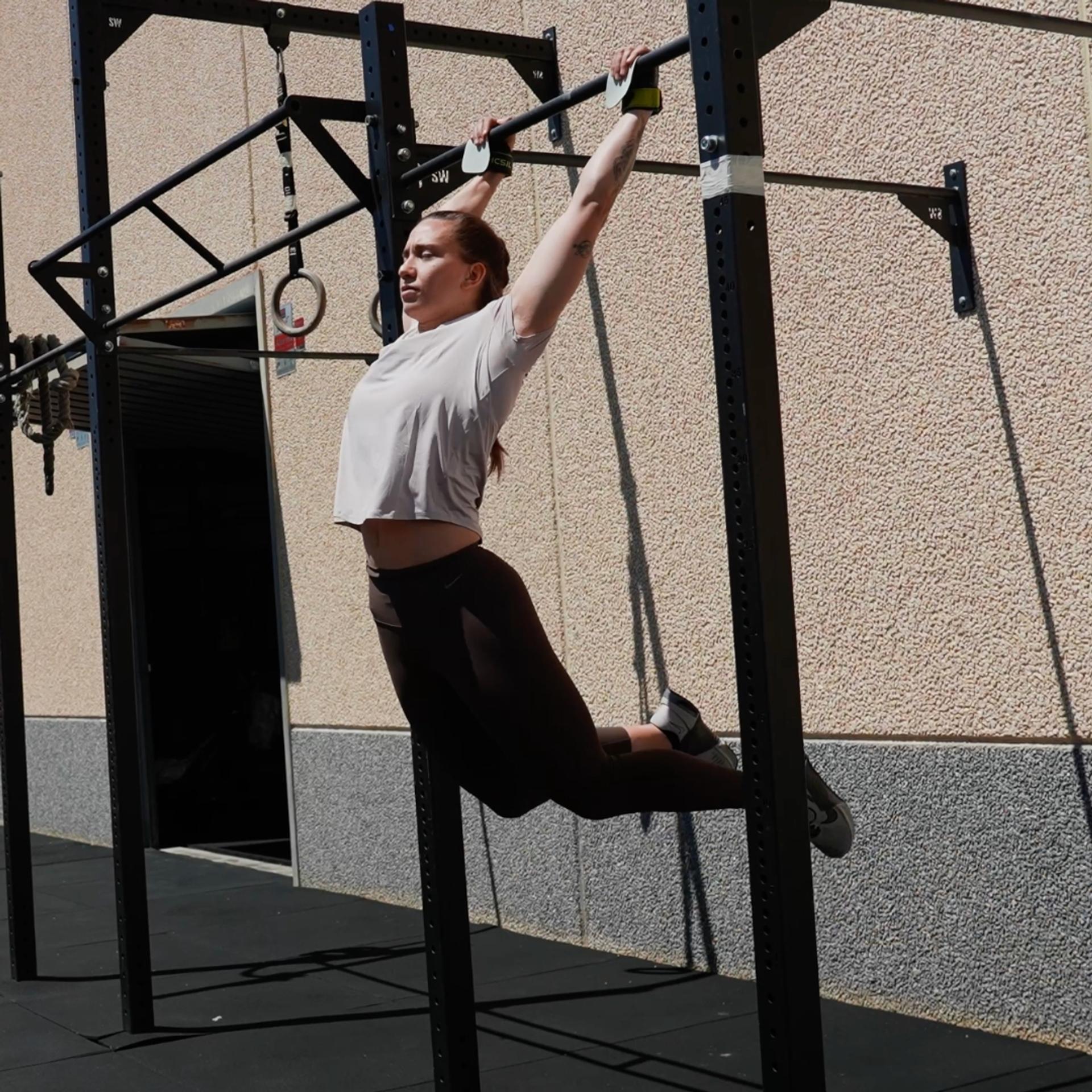
At the beginning of each repetition, the arms must be fully extended and the heels must be brought behind the bar. It is allowed to use tape around the pull-up bar or use protection for the hands, not both (gymnastics-style gymnastics, gloves, etc.) Overhand, underhand or mixed grip is allowed.

The repetition is credited when both feet come into contact with the bar at the same time, between the hands. Any part of the feet can make contact with the bar.
DUAL DUMBBELL HANG SNATCH
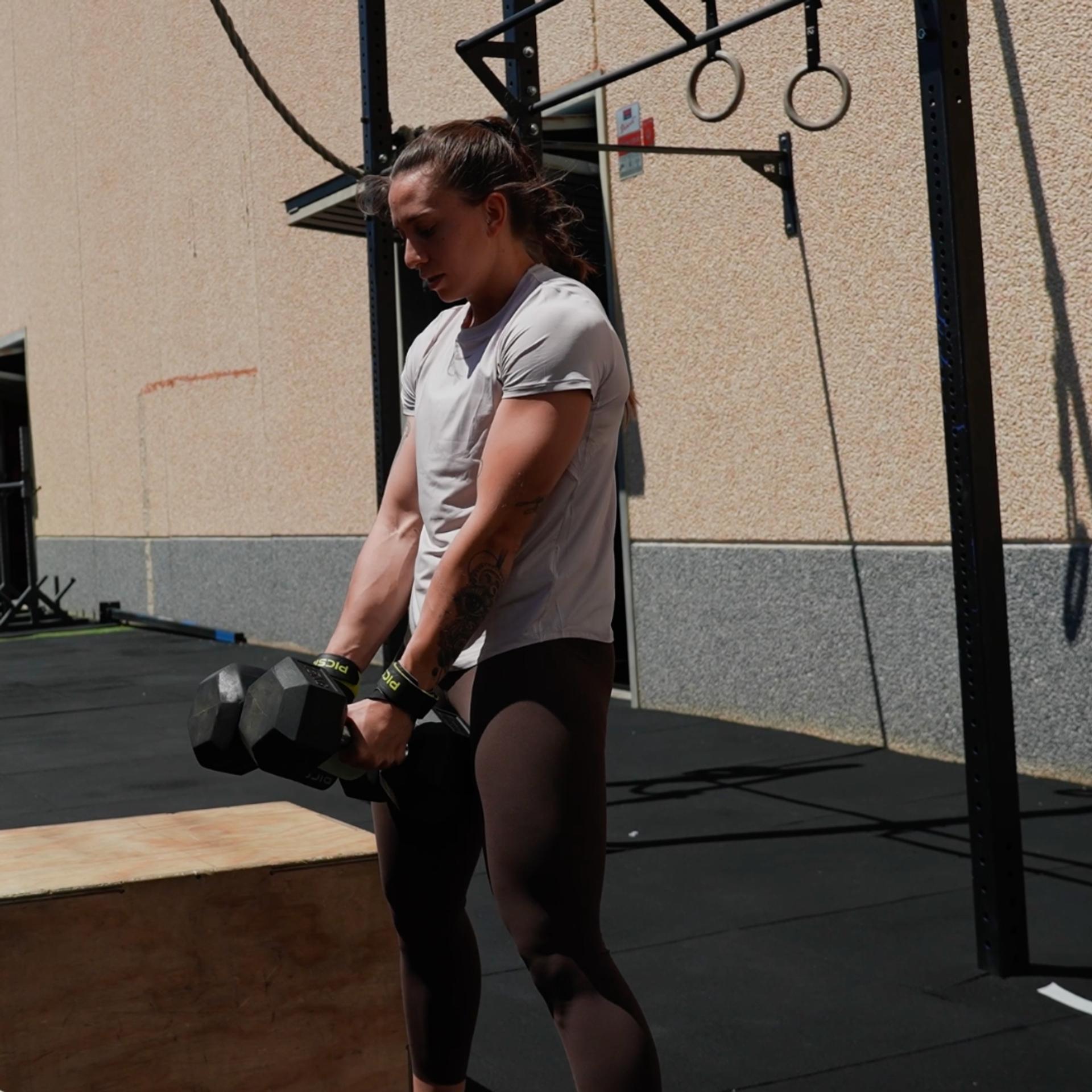
At the beginning of this movement, athletes lift the dumbbells off the ground performing a deadlift. Each repetition of the hang snatch begins with the dumbbell in a hanging position (between or outside the legs) and ends with the dumbbells completely locked overhead and over the middle of the body. The dumbbells have to go directly from the initial position to the final position, without stopping at the shoulders.

At the top, the arms, hips and knees are fully extended and the dumbbells are directly over the middle of the body with the feet aligned under the body. If the set is divided into several parts, at the beginning of each set you should reach the starting hanging position with the deadlift movement.
DUAL DUMBBELL HANG CLEAN AND JERK

At the beginning of this movement, athletes lift the dumbbells off the ground performing a deadlift. Each repetition of the hang clean and jerk begins with the dumbbell in a hanging position (between or outside the legs) and ends with the weights completely locked overhead and over the middle of the body.
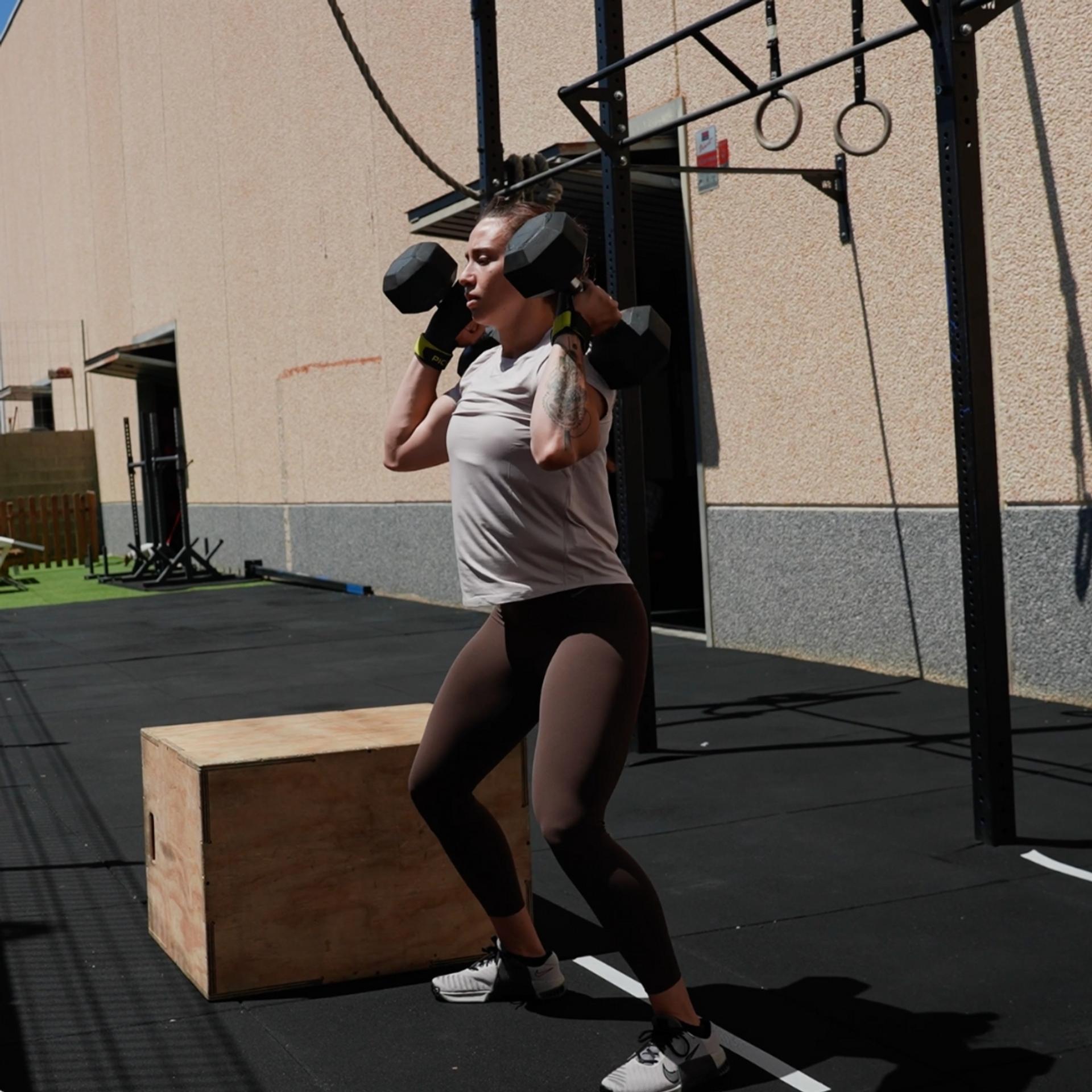
The dumbbells have to go from the starting position to a front rack position, with the dumbbells physically on the shoulders (clean), and from there to the final position (jerk). Any type of hang clean (muscle, power or squat) is allowed. The second part of the movement can be performed in any shoulder to overhead variation (shoulder press, push press, push jerk or split jerk).

At the top, the arms, hips and knees are fully extended and the DBs end directly over the middle of the body with the feet aligned under the body. If the series is divided into several parts, at the beginning of each series the starting position should be reached following the deadlift movement.
DUAL DUMBBELL BOX STEP OVER
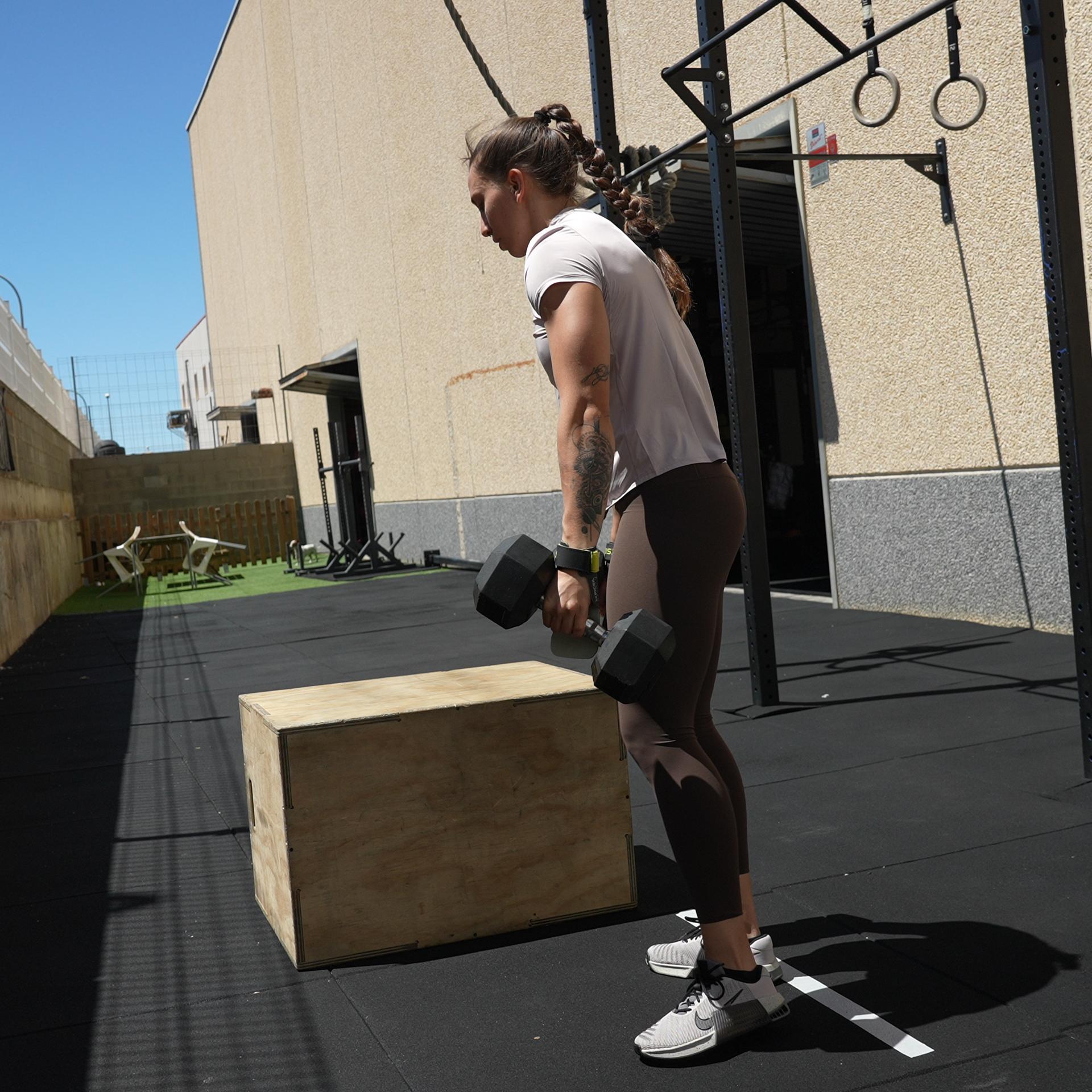
At the beginning of this movement, athletes lift the dumbbells off the floor or box. Each repetition of the box step over begins with the dumbbells in a carry position or in a front position.
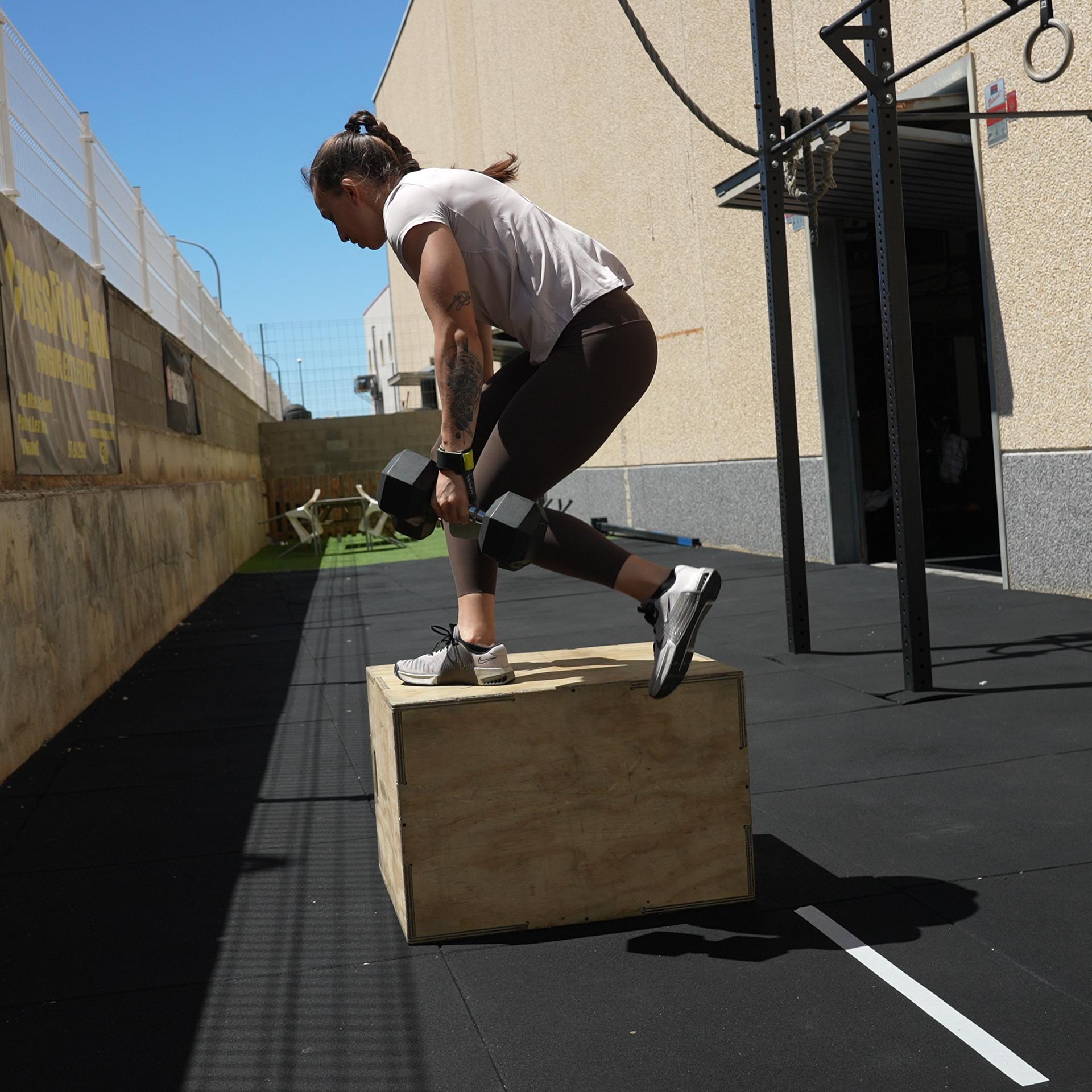
Next, you must step over the box, stepping on it with both feet before going down again.

The repetition is credited when the athlete reaches the other side of the box and only touches the box with his feet, no other part of the body.
WALL BALL SHOT
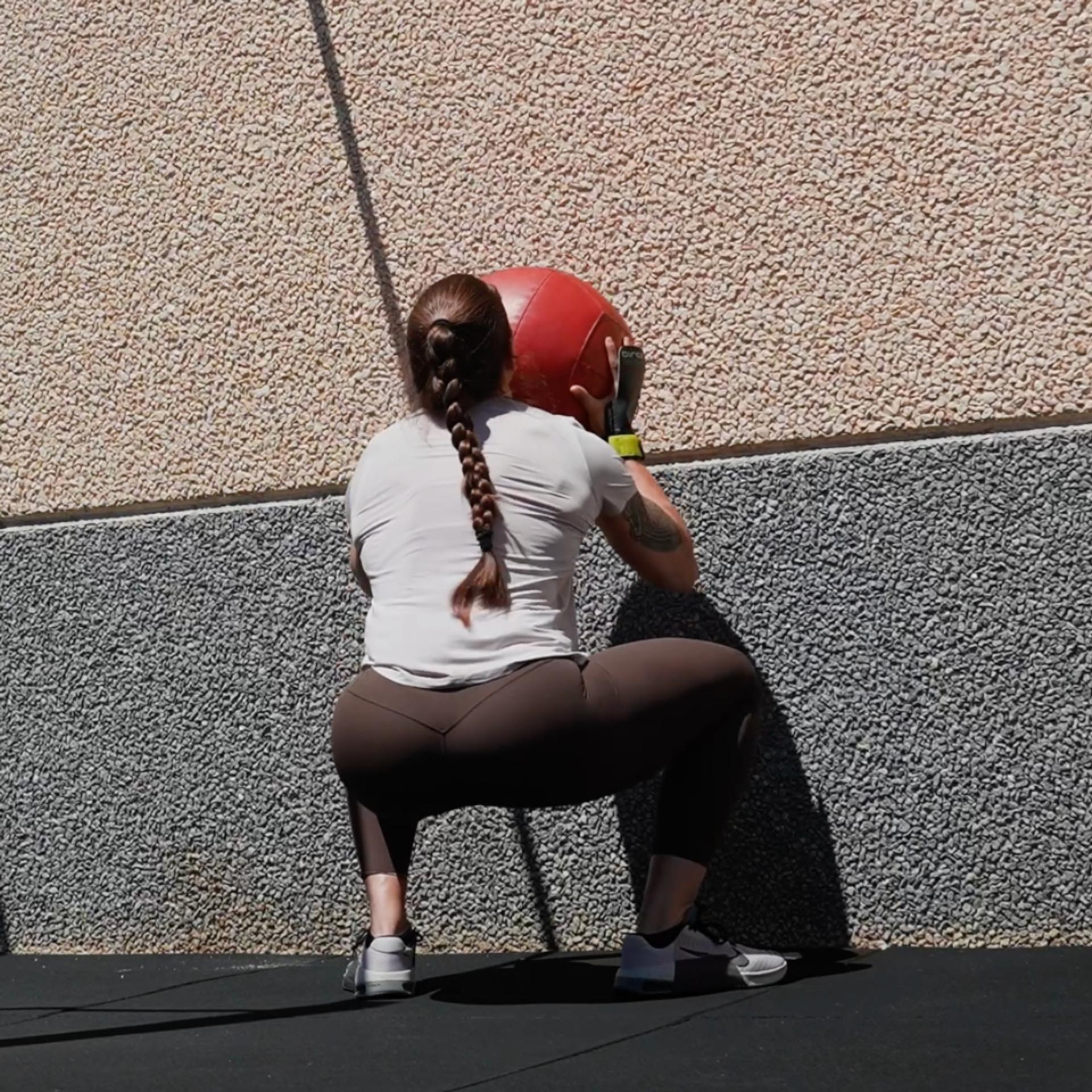
In the wall ball shot, the medicine ball must be taken from the bottom of a squat, with the crease of the hip below the knee, and thrown to hit the specified target. If the athlete does not come down from parallel in the squat portion of the movement, this will be a “no rep.”
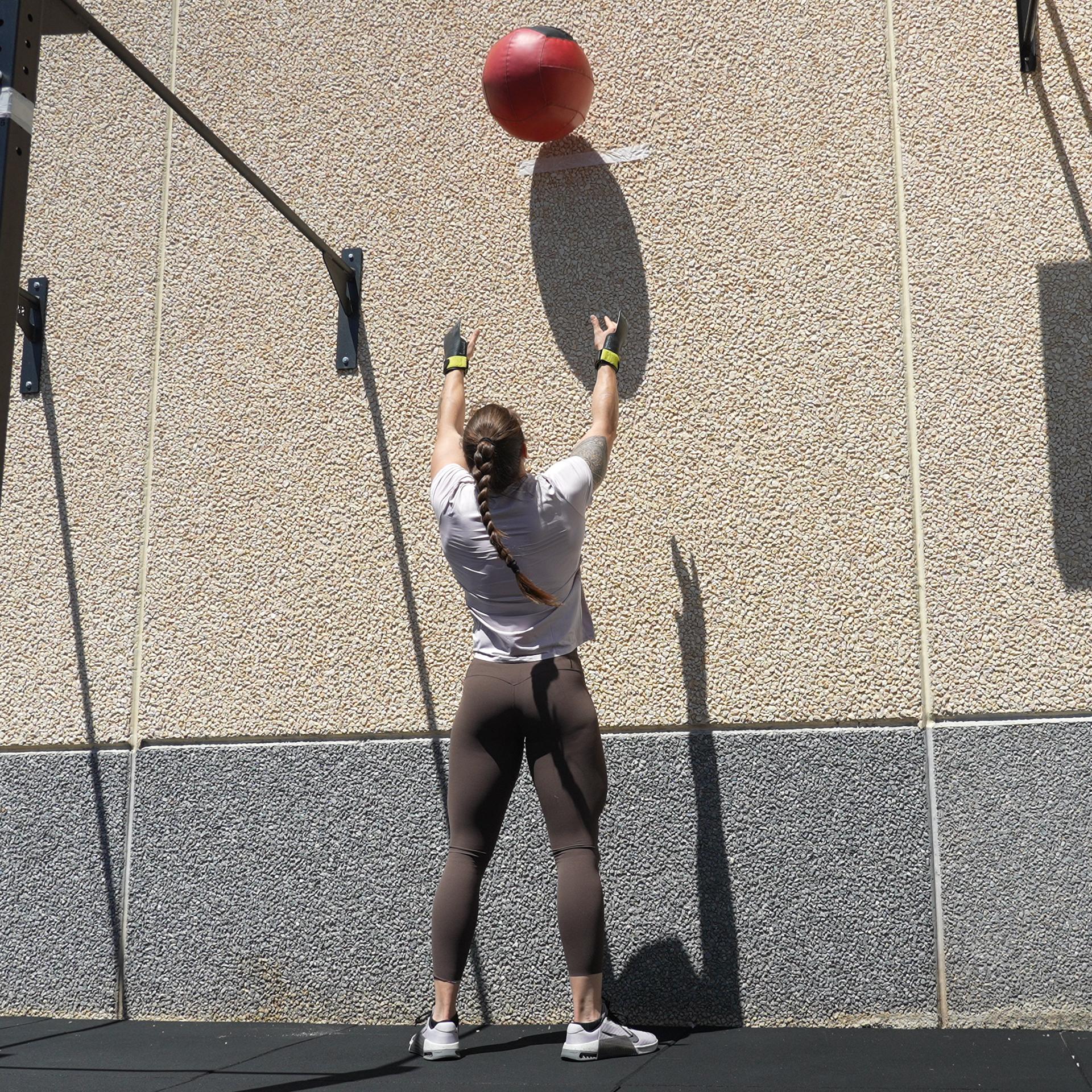
The rep is credited when the center of the ball hits the target at or above the specified height. If the ball hits lower or does not hit the target at all, it is considered a “no rep.” If the ball falls to the ground from above, it cannot be caught from the rebound to start the next repetition. The ball should sit on the ground before being lifted for the next repetition.
BURPEE BAR MUSCLE-UP
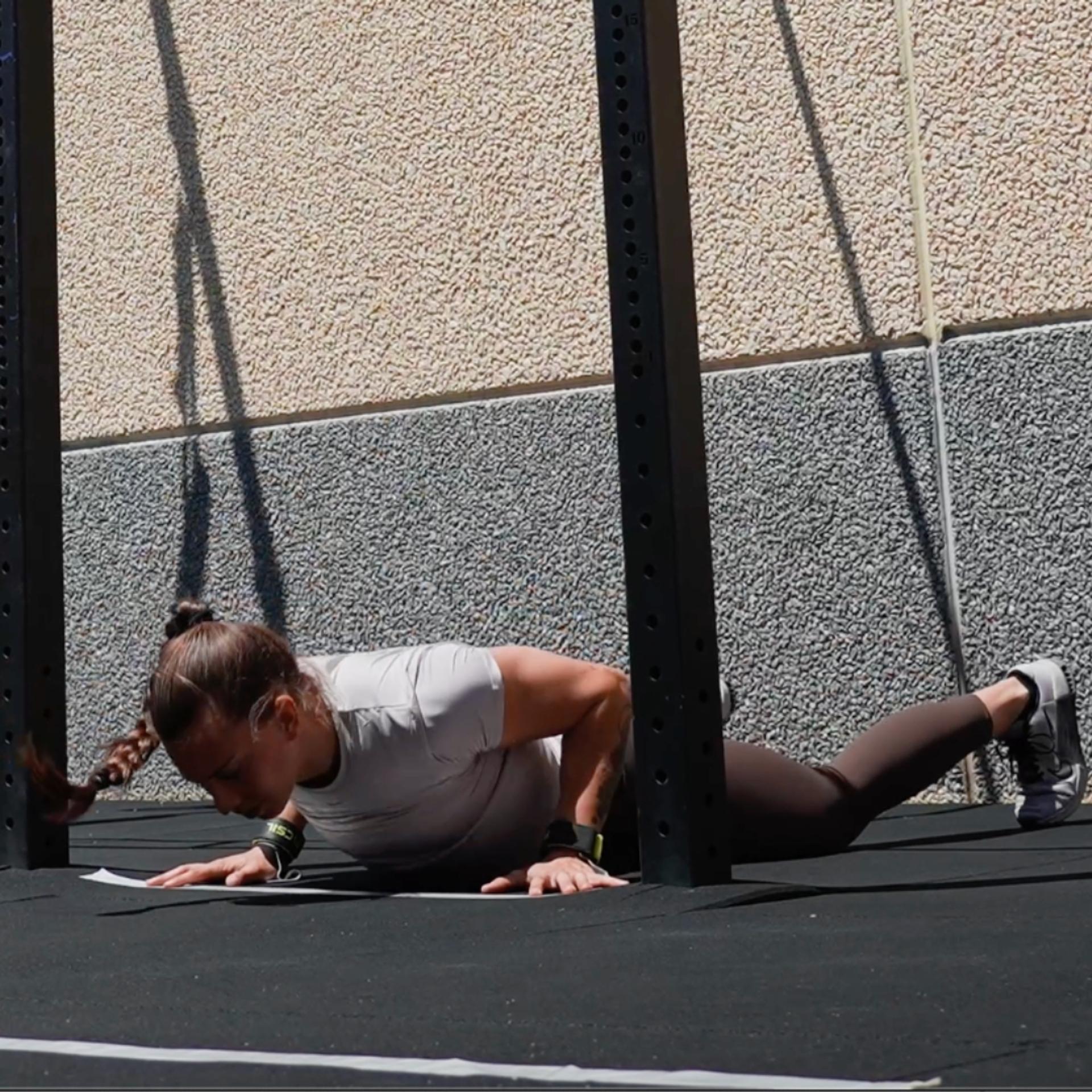
Each burpee should be performed under the rack. The chest and thighs touch the floor at the bottom. At the end of the burpee, the athlete must jump onto the rack to perform the second part of the movement.

In the bar muscle-up, the athlete must begin or go through a hang under the bar with arms fully extended and feet lifted off the ground. Kipping is acceptable, but pull-overs, roll overs, and glide kippings are not permitted. The heels cannot rise above the height of the bar during kipping. You are allowed to wrap tape around the pull-up bar or use hand protection (gymnastics style grip, gloves, etc.), but you cannot tape the bar and use hand protection.

At the end of the movement, athletes should have their elbows fully locked while maintaining support above the bar with their shoulders above or in front of the bar. Athletes must pass through a part of the background to block on the bar. Only the hands and no other part of the arm may touch the pull-up bar to help the athlete complete the repetition. Once up, the hands must remain in contact with the bar, and the athletes must remain supported with their arms. It is not allowed to remove your hands and rest on the bar.
BURPEE PULL-UP

Each burpee should be performed under the rack. The chest and thighs touch the floor at the bottom. At the end of the burpee, the athlete must jump onto the rack to perform the second part of the movement.

In the pull-up, the arms should be fully extended at the bottom, after jumping from the burpee. You are allowed to wrap tape around the pull-up bar or use hand protection (gymnastics style grip, gloves, etc.), but you cannot tape the bar and use hand protection.
At the top, the chin should clearly pass the bar. It is a standard pull-up. Dead hang and strict pull-ups, with kipping or butterfly are allowed as long as all requirements are met.
CALORÍAS DE REMO

The athlete will begin seated on the Concept 2 rower and row the specified calories per division with the dumper as high or as low as he/she decides. Athletes must start with the score visible and clearly at 0.
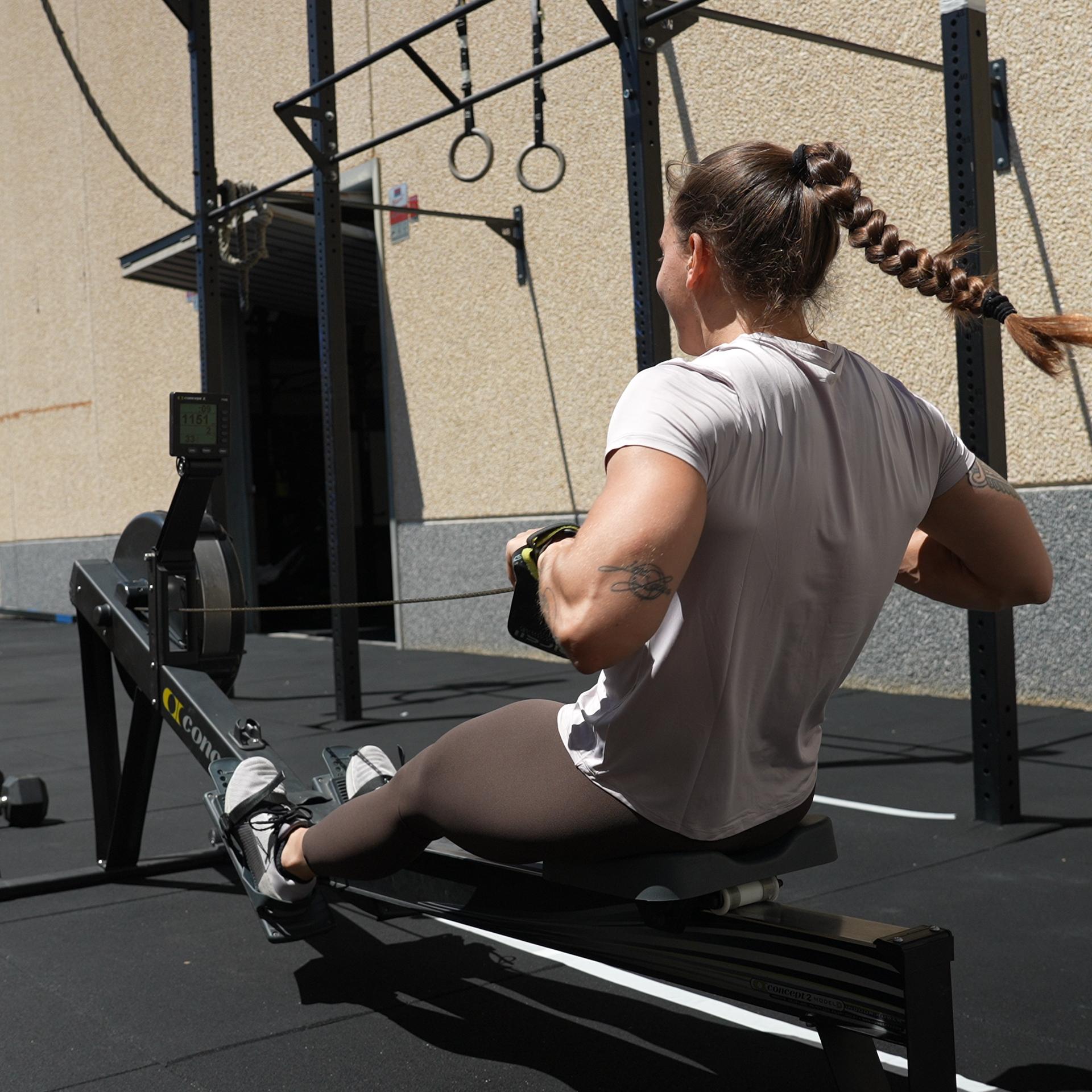
You will need to remain in the rowing seat until all calories are complete and clearly visible on the screen. You can receive assistance in restarting the rower each round, but not in tying your feet or holding the handle of the rower.
DOUBLE UNDERS
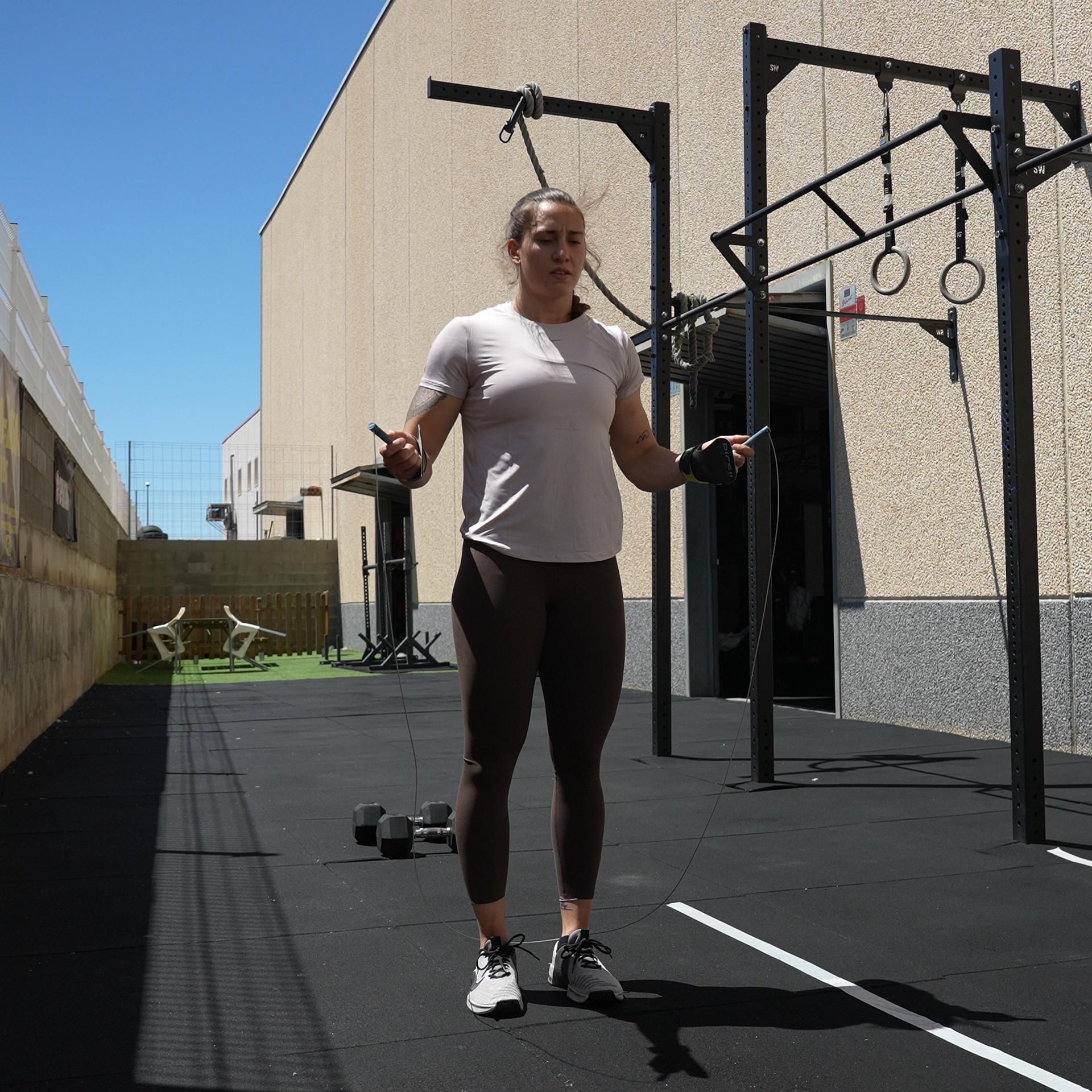
The athlete may begin each round with the rope prepared in his/her hands.
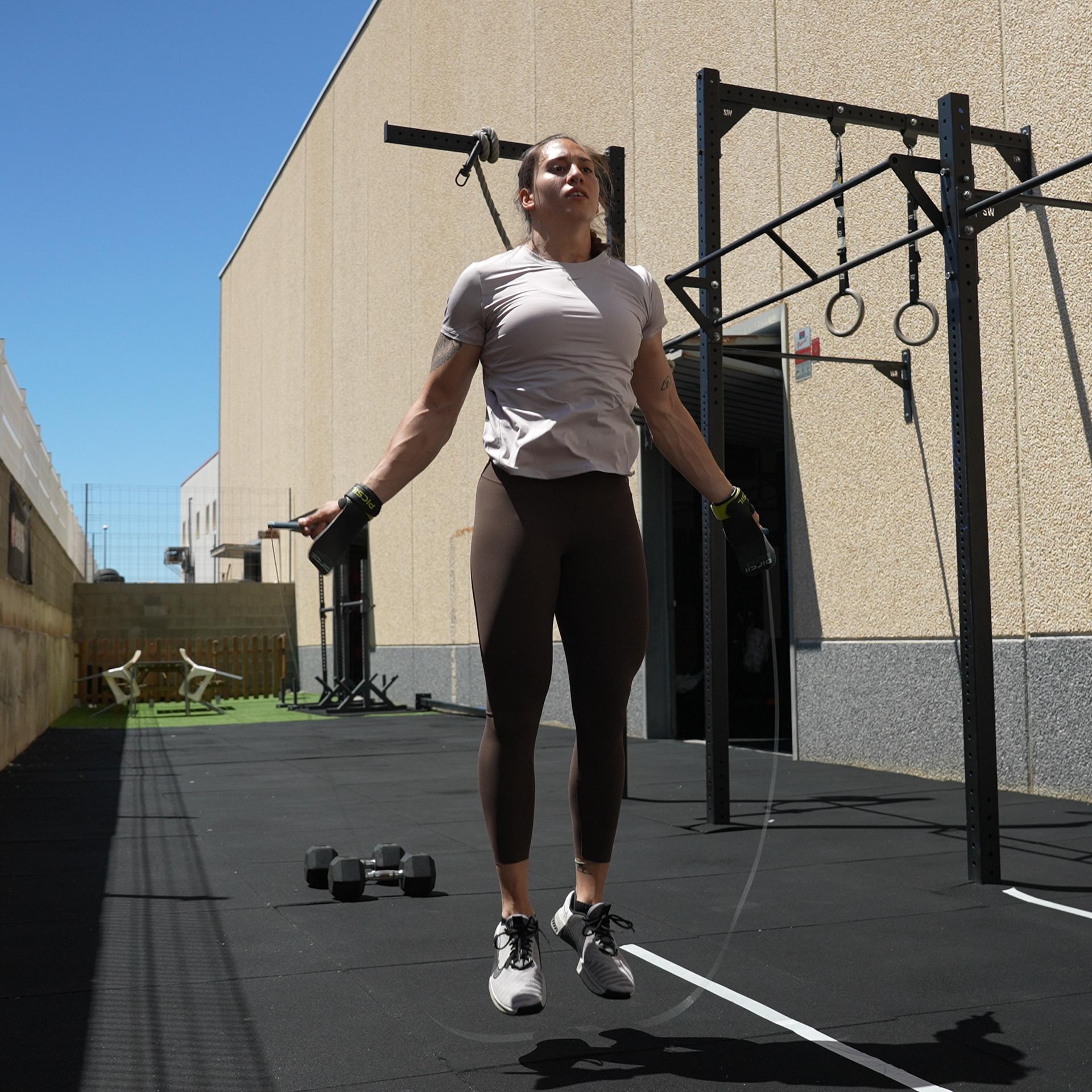
During each Double Under, the rope passes under your feet twice on each jump. The rope must rotate forward for the repetition to count. Only successful jumps are counted, not attempts.
SINGLE UNDERS

The athlete may begin each round with the rope prepared in his/her hands.

During each Single Under, the rope passes under your feet once on each jump. The rope must rotate forward for the repetition to count. Only successful jumps are counted, not attempts.